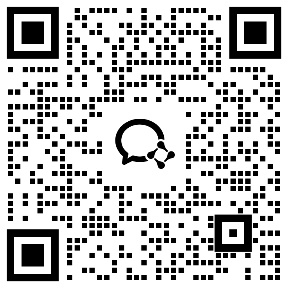- 相關推薦
關于動詞的小升初英語語法
小升初英語語法大全:動詞

這里所說的動詞是指各種動詞總稱,其中包括be動詞、情態(tài)動詞、助動詞、行為動詞。
1、be動詞( am, is, are, was, were )
1)am—was, is –was, are--were 口訣:我用am, 你用are, is用在他她它,所有復數(shù)全用are。
2)肯定和否定句 I am (not) from London. He is(not) a teacher. She is(not) in the dining room. My hair is(not) long. Her eyes are(not) small.
3)一般疑問句 Am I a Chinese? Yes, you are. No, you aren’t. Are they American? Yes, they are. No, they aren’t. Is the cat fat? Yes, it is. No, it isn’t.
4)be動詞的否定形式:am not(沒有縮寫形式),are not = aren’t ,is not = isn’t 。
2、助動詞( do, does, did )
do, does用于一般現(xiàn)在時,其過去式did用于一般過去時。它們通常用在疑問句和否定句中。它們的否定形式:do not = don’t, does not = doesn’t, did not = didn’t。
注意:在一般現(xiàn)在時中,does用于第三人稱單數(shù),其余一律用助動詞do;助動詞do, does, did后面一定要用動詞原形。
3、情態(tài)動詞
情態(tài)動詞也是一類特殊的動詞,平時我們不把它說成是動詞。情態(tài)動詞可以和行為動詞同時出現(xiàn)在同一個句子中。
我們現(xiàn)在學過的情態(tài)動詞有:can、could、shall、should、will、would、may、might 、must。
注意:情態(tài)動詞后動詞總是用原形。(不受其他任何條件影響)
4、行為動詞
就是我們平時上課時說的動詞,表示某一動作或行為。如:sweep、live等。
行為動詞我們已學過它們的四種形式:原形、第三人稱單數(shù)+s/es、現(xiàn)在分詞(也叫動名詞)+ing、過去式+ed。
(1)動詞第三人稱單數(shù)變化規(guī)則:
A、一般直接加“s”,如:play – plays, visit – visits, speak – speaks;
B、以“s”,“x”,“sh”,“ch”結尾時,加“es”,如:catch – catches, watch – watches;
C、以“輔音字母+y”結尾時,變“y”為“i”再加“es”,如:carry – carries, study – studies。
(2)現(xiàn)在分詞(動名詞)構成規(guī)則:
A、一般直接加“ing”,如:go – going, do – doing, look – looking;
B、以不發(fā)音的“e”結尾的單詞,去“e” 加“ing”,如:take – taking, make – making, have – having;
C、以重讀閉音節(jié)結尾的詞,如末尾只有一個輔音字母,需要雙寫這個字母再加“ing”,如:put – putting, stop – stopping, run – running, get – getting, swim – swimming, sit – sitting, begin – beginning, jog – jogging, forget – forgetting。
(3)過去式構成規(guī)則:
A、一般直接加“ed”,如:plant – planted, visit – visited, pick – picked;
B、以不發(fā)音字母“e”結尾,直接加“ed”,如:like – liked, hope – hoped, taste – tasted;
C、以“輔音字母+y”結尾時,變“y”為“i”再加“ed”,如:try – tried, carry – carried, study – studied;
D、有些動詞要雙寫最后一個字母,再加“ed”,如:stop – stopped;
E、還有很多動詞的過去式是不規(guī)則的,同學們要注意平時多積累。
小升初英語語法大全:英語中的八種詞性
樂加樂英語:小升初英語語法大全:英語中的八種詞性,供大家參考學習~
Words are used to form patterns of English grammar and syntax. Each word falls into one of eight categories referred to as parts of speech. Here are the eight commonly recognized parts of speech.
英語的語法和句法中也會形成詞的類型。每個詞都會被歸為八類中的一類,這里我們要講的就是英語中八類最常見的詞性。
Certain words have further categorization such as: adverbs of frequency: always, sometimes, often, etc. or determiners: this, that, these, those . However, the basic categorization of words in English fall into these eight categories.
具體的詞還會有更進一步的分類,比如always(總是), sometimes(有時), often(經常)等等這些被叫做頻率副詞,還有this(這個), that(那個), these(這些), those(那些)被叫做限定詞,不過基本的英語詞類還是有這八類的。
The Eight Parts of Speech
八種詞類
名詞
A word which is a person, place, thing or idea.
描述一個人、一個地點、一個東西或者一種想法的詞。
例如:
Mount Everest, book, horse, Peter, strength, car, Empire State Building, China, house, child
珠穆朗瑪峰,書,馬,皮特(人名),力量,汽車,帝國大廈,中國,房子,孩子
代詞
A word that is used to take the place of a noun.
用來指代一個名詞的詞
例如:
I, they, their, ourselves, itself, your, my, nobody, who, which, her, we
我,他們,我們自己,它自己,你的,我的,沒有人,誰,哪個,她(賓格),我們
形容詞
A word that is used to describe a noun or pronoun.
一個用來描述一個名詞或者代詞的詞
例如:
proud, purple, French, few, this, huge, sad, second, none
驕傲的,紫色的,法國的,很少的,剛過去的,巨大的,悲傷的,其次的,沒有的
動詞
A word that indicates an action, being or state of being.
一個表示動作進行或者存在的狀態(tài)的詞
例如:
play, run, think, study, smell, wait, be, drive, renounce, fill
玩,跑,想,學習,聞,等,是,駕駛,拒絕,填充
副詞
A word that is used to describe a verb which tells how, where, or when something is done.
副詞是用來描述一個動作怎樣完成、在哪里完成或者什么時間完成的詞
例如:
carefully, often, very, [w]intelligently, quite, too, rarely, never
仔細地,經常,非常,聰明地,非常,太,很少,從不
連詞
A word that is used to join words or groups of words.
一個用來連接幾個詞或者幾組詞的詞
例如:
and, or, but, neither, because, while, since, although
和,或者,但是,既不是,因為,而,自……以來,雖然
前置詞,漢語中多叫介詞
A word used indicating the relationship of a noun or pronoun to another word.
一個用來表明一個名詞或代詞和另一個詞的關系的詞
例如:
in, until, of, from, after, under, beyond, across, toward
在……里面,直到,……的,從……開始,在……之后,在……下面,超出,穿過,向
感嘆詞
A single word used to express strong emotion.
一個表達強烈的感情的詞
例如:
Wow! Ah! Oh! No!
哇!啊!哦!不!
編輯推薦:
小升初英語語法
小升初英語語法大全:專有名詞
樂加樂英語:小升初英語語法大全:專有名詞,供大家參考學習~
專有名詞的定義:
專有名詞表示特定的人名、地名或組織機構的名稱,專有名詞一般具有獨一性。除個別外,專有名詞通常沒有復數(shù)形式。例如:
1. 人名、地名:Jenny 珍妮 Smith 史密斯 China 中國 Asia 亞洲 the Great Wall 長城 London 倫敦
2. 組織機構、時間、書籍報刊等的名稱:the United Nations 聯(lián)合國 Bank of China 中國銀行 May 五月份 Sunday 星期天 Time《時代》周刊 the Guardian《衛(wèi)報》
3. 家庭關系名稱、個人頭銜:Mum 媽媽 Grandpa 爺爺 Doctor Black 布萊克大夫 Captain Grey 格雷船長 Mr. Hopkins 霍普金斯先生 Miss White 懷特小姐
專有名詞的注意事項:
1. 因為專有名詞具有專有獨一性,所以一般情況下,專有名詞的第一個字母要大寫,不能在專有名詞的前面加上不定冠詞"a",也不能在專有名詞詞尾加上表示復數(shù)形式的"-s"。如:
Beijing is the capital of China.
北京是中國的首都。
但是有時專有名詞可以轉化成為普通名詞,轉化后它就具有普通名詞的特性了,即可以在其前面加上不定冠詞"a",在其詞尾加上表示復數(shù)形式的"-s"。以下是專有名詞轉化成可數(shù)普通名詞的例子:
A Mr Green called just now.
剛才有位格林先生打來電話。(此時 a Mr Green = a man called Mr Green)
I knew a John Lennon, but not the famous one.
我認識一個叫約翰·萊農的人,但不是著名的那一位。
There are three Johns in this class.
這個班里有三個叫約翰的人。(此時 three Johns = three persons called John)
There are many Edisons in our country.
此句有兩種不同的意思:
其一、我們國家有許多叫愛迪生的人。
其二、我們國家有許多像愛迪生一樣的發(fā)明家。
2. 姓氏是專有名詞,一般沒有復數(shù)形式,而且也不能加定冠詞"the"。但是,當姓氏的前面加定冠詞"the",在后面加上"-s",表示"一家人"。如:
the Smiths 史密斯一家人
The Blacks have moved house. 布萊克一家已經搬走了。
3. 有些專有名詞表面上看是復數(shù)形式,但是在實際使用中謂語動詞通常采用單數(shù)形式。例如:
the United States 美國
The United Nations was organized in 1945. 聯(lián)合國是1945年組建起來的。
這里把"the United Unions"看成一個整體。
【動詞的小升初英語語法】相關文章:
英語語法情態(tài)動詞講解06-08
英語語法口訣非謂語動詞03-06
英語語法詳解 情態(tài)動詞(二)04-30
英語語法解析 情態(tài)動詞(一)04-30
小升初英語語法專項訓練06-08
英語語法詳解 動詞不定式(五)04-30
英語語法詳解 動詞不定式(一)04-30
英語語法詳解 動詞不定式(二)04-30
英語語法詳解 動詞不定式(三)04-30






